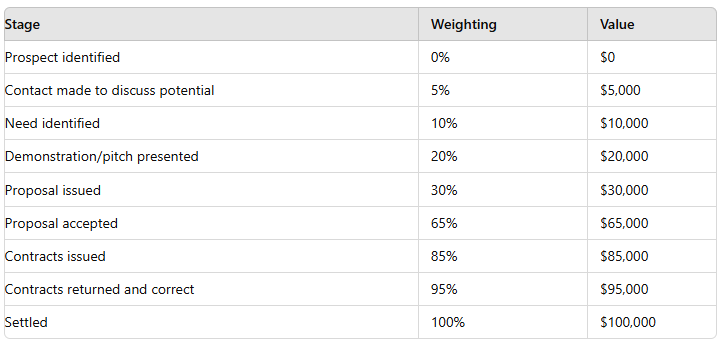It’s September already and the clock is ticking, with realistically only 3 months of peak sales activity remaining before December and the “silly season” kicks in.
It’s crunch time, and knowing your numbers becomes more crucial than ever to embed the activities and habits now that will ensure your future success.
Effective pipeline management is your secret weapon, helping you and your team stay on top of opportunities, make informed decisions, and close those deals that will end the year on a high note.
Let’s explore what pipeline management is all about, why it’s so important, and how embracing best practices can lead to success.
What is Pipeline Management?
Think of pipeline management as the art of guiding your sales opportunities through the journey from awareness, interest, decision, action to customer.
We do this through continuing to build trust, add value and move to the next logical step.

It’s about knowing exactly where each potential deal stands, what needs to happen next, and how to keep everything moving smoothly toward a close. Picture it like a roadmap that shows you not only where you are but the best route to reach your destination.
A well-organised pipeline gives you clarity and control, ensuring no opportunity slips through the cracks.
Why Does Pipeline Management Matter?
At its core, pipeline management is about understanding and maximising the potential of each opportunity. Not every lead will turn into a sale, and that’s okay. The goal is to know how far along each opportunity is in the sales process and how likely it is to close. By doing this, you can focus your energy where it will have the most impact.
One of the best ways to do this is through a “weighted” pipeline management approach.
This method assigns a value to each stage of the sales process, reflecting the probability of closing the deal. As opportunities progress through the pipeline, their weighted value increases, giving you a clearer picture of potential revenue.
For example, imagine you’re working on a $100,000 deal:

In this scenario, the value of the opportunity grows as it progresses through the pipeline, helping you gauge its true worth and prioritise accordingly.
Best Practices for Pipeline Management
To finish the year strong, aim to keep a pipeline with a total weighted value that covers roughly 12 weeks of your sales target. This approach ensures you’ve got enough potential deals in the pipeline to hit your goals, even if some fall through or take longer than expected.
Here’s how a weighted pipeline can elevate your sales strategy:
- Visibility: See clearly where each opportunity stands and its likelihood of closing.
- Actionable Insights: Determine the best steps to move prospects forward in the sales process.
- Problem-Solving: Spot where prospects might be stalling or dropping off and address issues before they become roadblocks.
- Accurate Forecasting: Create more reliable forecasts for your future results, allowing for better planning.
- Efficiency: Focus your efforts on the most critical areas, maximising your time and resources.
- Prioritisation: Direct your energy toward high-value opportunities, increasing your chances of success.
- Performance Benchmarking: Measure and compare your performance to identify areas for improvement and keep your strategy on track.
Throughout this process, it’s essential to keep leads warm and continually add value. Whether it’s providing additional information, offering solutions to their challenges, or simply staying in touch, each interaction should build toward closing the deal.
If we are not doing the right level of follow ups, we are leaving business on the table. Very often the decision to buy can take a lot longer than we initially think, so staying in touch is an important part of every salesperson’s role.

Conclusion
As the year draws to a close, mastering your pipeline management could be the difference between hitting or missing your targets. By knowing your numbers and leveraging a weighted pipeline approach, you’ll be better equipped to forecast, prioritise, and ultimately drive stronger results.
Remember, what you put into your pipeline is what you’ll get out—doing the work now will set yourself up for a successful year-end finish without stress or overwhelm.
If we focus on getting our best practice Sales Habits in place now, everything else becomes much easier in the future.
The better it gets, the better it gets!




